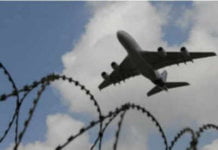NYKOPING, Sweden (AP) — School’s out for summer, and Swedish legal professional Pia Bjorstrand, her husband, and their sons are shouldering backpacks, ready to board the first of many trains on a whistle-forestall vacation around northern Europe.

The family is part of a small but developing motion in Europe and North America that’s shunning air journey as it produces excessive stages of greenhouse gasoline emissions. While specialists say preventing weather change would require more significant and bolder moves by way of governments around the arena, some people are doing what they can to assist, including changing lengthy-held journey conduct.
The fashion is most distinguished in Sweden, wherein the likes of teenager climate activist Greta Thunberg have challenged travelers to confront the vast carbon value of flying. Even I, who was climate-conscious ten years in the past, didn’t consider flying in the manner that I suppose now,” said Bjorstrand as she waited at the platform of Nykoping station in eastern Sweden. “I didn’t recognize that the effect of flying became so large. So we flew anywhere.
Airlines argue that flying money owed for just 2% of human-made greenhouse gas emissions and increasingly more efficient planes now use approximately identical gas per passenger as half of the complete vehicle. In addition, the benefit and falling cost of air travel are enabling more exceptional people to fly extra often, which means airline emissions are hovering while different resources decline.
In 2013, business companies emitted 710 million heaps of carbon dioxide. In these 12 months, industry organization IATA predicts airlines’ emissions of CO2 will attain 927 million tons, more than a business country like Germany. The figures don’t encompass other elements that scientists say boom the greenhouse effect from flying. Planes fare exceptionally poorly compared to rail tours, especially in international locations in which trains can draw on full delivery of renewable power, like Sweden.
Bjorstrand’s train adventure from Nykoping to the Danish capital Copenhagen weighs in at 2.4 kilograms (five.3 pounds) of CO2 in keeping with the individual, consistent with a web calculator created with the aid of the Germany-based Institute for Energy and Environmental Studies consultancy. That compares with over 118 kilograms (260 kilos) of CO2 for a one-manner flight. Such amounts quickly take a big chunk out of the annual carbon budget of 2,000 kilograms in step with men or women that scientists say could be sustainable.
The rail journey is twice as long employing a train — 5 ½ hours compared with 3 hours of flying and transit — however, that’s best with the own family. There’ll be plenty of time for Oscar, nine, to pore over his comic books and Gabriel, eleven, to read up on World War II history or watch the rich inexperienced forests and lakes of southern Sweden float with the aid of.








